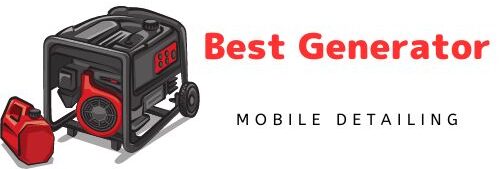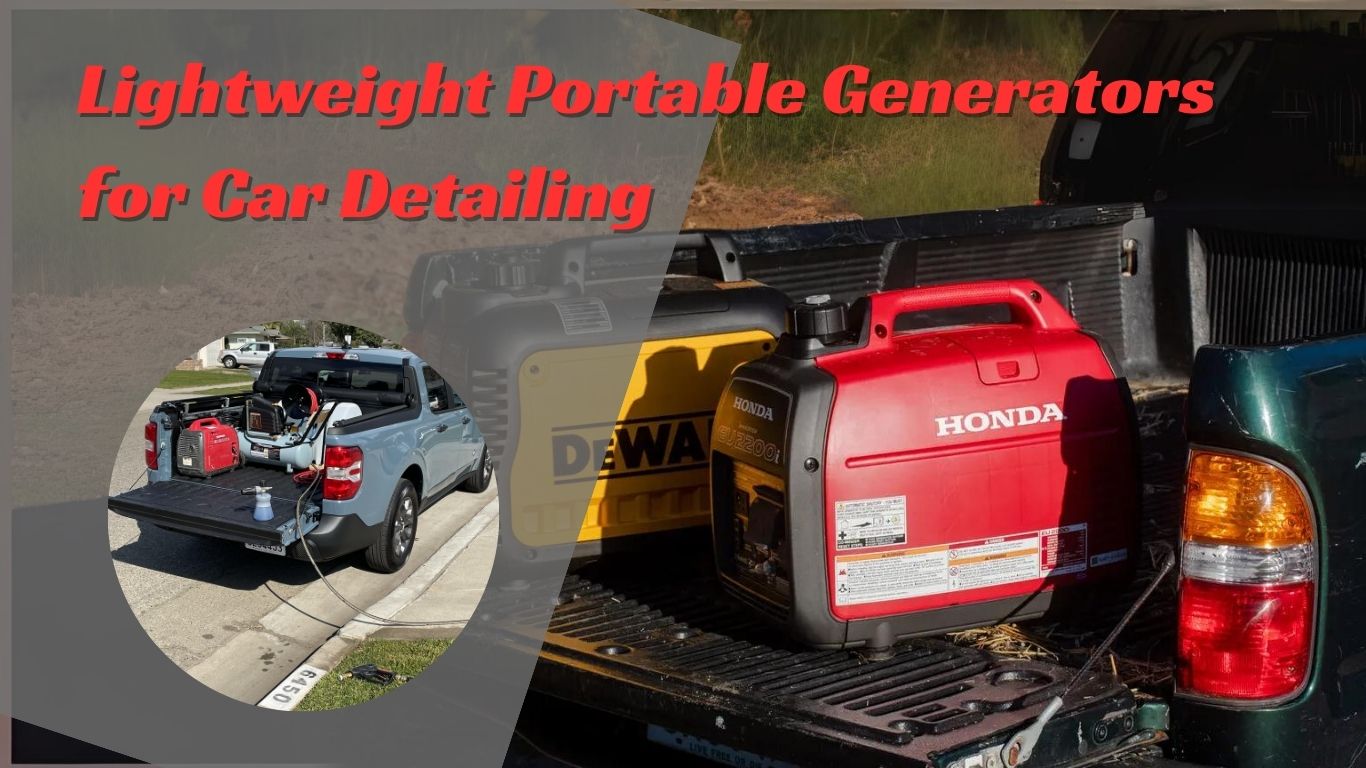These compact, efficient machines provide the necessary power for all your detailing equipment, ensuring you can deliver top-notch service no matter where you are. With a lightweight portable generator, you can power essential tools such as vacuum cleaners, polishers, and pressure washers, enhancing your ability to offer on-site services and expanding your potential client base. This flexibility boosts customer satisfaction and helps maintain high service standards wherever your work takes you.
Introduction to Lightweight Portable Generators
Imagine a bustling car detailing professional who’s always on the move, meeting clients at various locations throughout the city. In this line of work, having a reliable and portable power source is not just a convenience—it’s a necessity. This is where lightweight portable generators come into play.

These compact, efficient machines provide the necessary power for all your detailing equipment, ensuring that you can deliver top-notch service no matter where you are.
Definition and Importance
Lightweight portable generators are compact power units designed to be easily transported and provide a reliable source of electricity. Unlike their bulkier counterparts, these generators are designed to be light and easy to handle, making them perfect for professionals needing mobility.
Their importance cannot be overstated, as they enable uninterrupted power supply in various settings, from remote job sites to urban environments where power outlets might not be readily available.
Relevance to Car Detailing
In the car detailing industry, the ability to offer on-site services is a significant advantage. Clients appreciate the convenience of having their vehicles detailed at their location, whether at home or work. Lightweight portable generators make this possible by powering essential detailing equipment such as vacuum cleaners, polishers, and pressure washers.
This flexibility enhances customer satisfaction and expands your service range and potential client base. With the right generator, you can ensure your tools are always ready for action, allowing you to maintain high service standards wherever your work takes you.
Understanding Power Needs in Car Detailing
In the dynamic world of car detailing, understanding your power needs is crucial. Each piece of equipment requires a specific amount of power to operate efficiently, and having a generator that meets these requirements is essential for seamless service delivery.
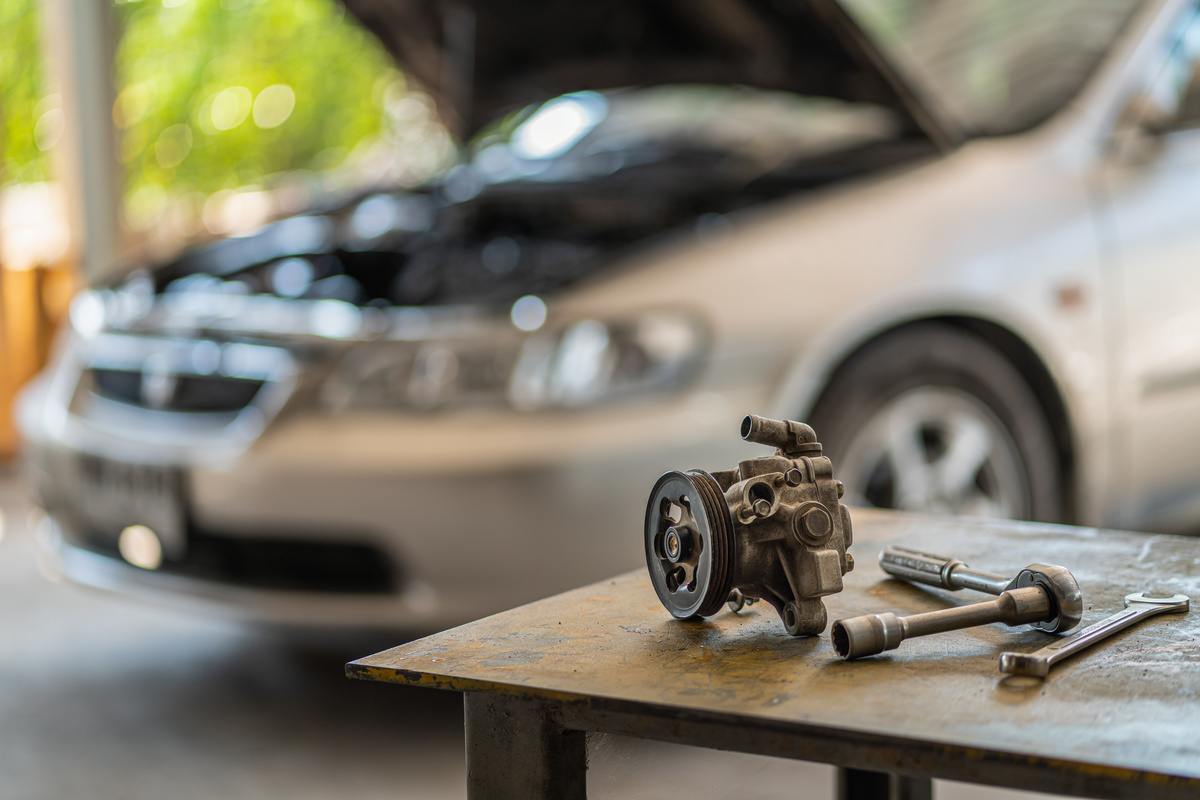
This understanding directly influences the selection of a lightweight, portable generator suitable for your business.
Examples of Tools Used
In car detailing, the right tools make all the difference in achieving professional-grade results. Below are some examples of commonly used tools in the industry and their typical power requirements, which illustrate why a suitable lightweight portable generator is essential.
Vacuum Cleaners
Handheld Vacuums:
- Power Requirement: Approximately 500 watts
- Usage: Ideal for quick, spot cleanups, especially useful for removing dirt and debris from car seats and floor mats.
Shop Vacuums:
- Power Requirement: 1000 to 1500 watts
- Usage: Perfect for deep cleaning car interiors, capable of handling both wet and dry debris effectively.
Pressure Washers
Electric Pressure Washers:
- Power Requirement: 1200 to 2000 watts
- Usage: Suitable for washing car exteriors, removing dirt, grime, and contaminants with ease. They are quieter and more maintenance-friendly compared to gas-powered options.
Gas-Powered Pressure Washers:
- Power Requirement: 2500 to 3000 watts
- Usage: Best for heavy-duty cleaning tasks, providing higher pressure and greater cleaning power for stubborn stains and larger vehicles.
Polishers and Buffers
Rotary Polishers:
- Power Requirement: 800 to 1000 watts
- Usage: Offers powerful cutting action, ideal for significant paint correction, such as removing deep scratches and oxidation.
Dual Action (DA) Polishers:
- Power Requirement: 600 to 800 watts
- Usage: Versatile and user-friendly, these polishers are excellent for both polishing and finishing, reducing the risk of damaging the paint.
Air Compressors
Portable Air Compressors:
- Power Requirement: 1500 to 1800 watts
- Usage: Lightweight and easy to transport, these compressors are great for inflating tires and operating small pneumatic tools.
Stationary Air Compressors:
- Power Requirement: 2000 to 2500 watts
- Usage: More powerful and capable of handling a variety of tasks, including running multiple pneumatic tools simultaneously.
By understanding the specific power needs and examples of tools used in car detailing, we can better appreciate the importance of selecting the right lightweight portable generator. This ensures that all your tools operate efficiently and effectively on the go, leading to a more productive and successful detailing business.
Advantages of Using Lightweight Generators
Lightweight portable generators offer numerous benefits, making them an essential tool for car detailing professionals. Below, we outline the primary advantages that these generators provide, emphasizing their relevance to the mobile detailing industry.
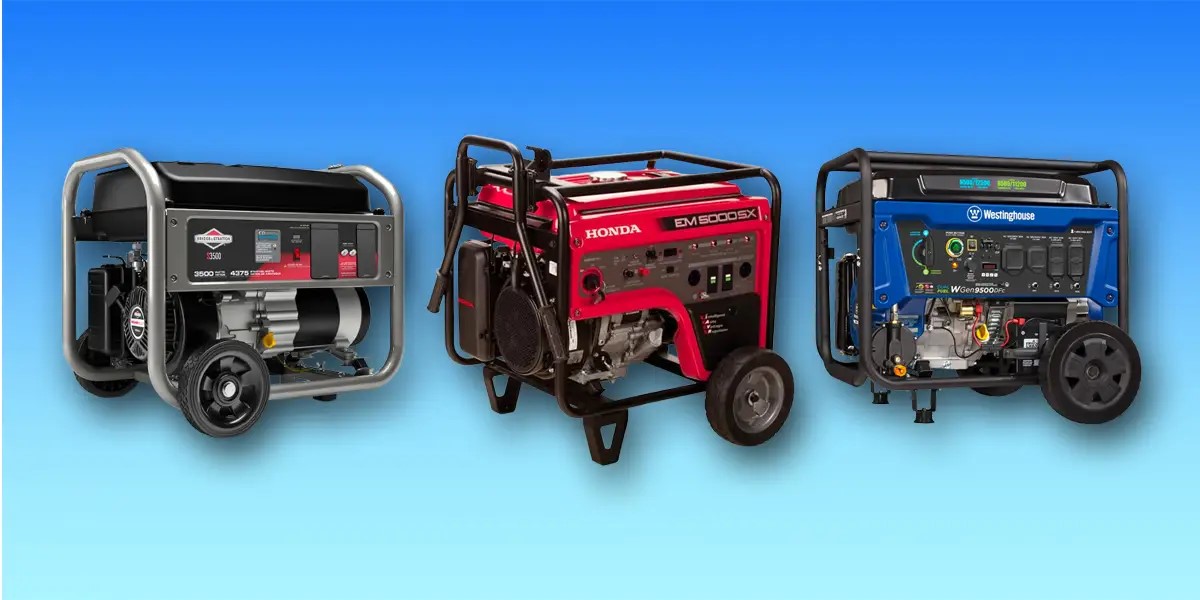
Portability and Ease of Transport
One of the most significant advantages of lightweight generators is their portability. These generators are designed to be compact and easy to carry, which is crucial for mobile detailing businesses.
- Compact Size: Lightweight generators are smaller in size, allowing them to fit easily into a vehicle or trailer alongside other detailing equipment.
- Easy to Carry: Many models come with handles or wheels, making it simple to move the generator from one job site to another without requiring much effort.
- Flexibility: Their portability allows detailers to work in various locations, from customer driveways to parking lots, without being restricted by access to power outlets.
This portability is particularly beneficial for mobile detailing businesses that need to move quickly from one job to the next. With a lightweight generator, setting up and packing up become much more manageable, leading to increased productivity and less downtime between jobs.
Efficiency and Convenience
In addition to their portability, lightweight generators are also highly efficient and convenient, which further enhances their appeal to car detailing professionals.
- Quick Setup: Setting up a lightweight generator is typically fast and straightforward, enabling detailers to start their work promptly.
- Fuel Efficiency: Many lightweight models are designed to be fuel-efficient, reducing the frequency of refueling and lowering operational costs.
- Quiet Operation: Advanced technology in modern generators often includes noise reduction features, allowing for a quieter operation that is less disruptive to both the detailer and the customer.
The combination of efficiency and convenience means that lightweight generators not only save time but also contribute to a smoother and more professional operation. Fuel efficiency, for instance, ensures that detailers can work longer hours without the interruption of frequent refueling.
Quiet operation, on the other hand, ensures a more pleasant experience for both the service provider and the client, especially in residential areas.
These advantages make lightweight generators an invaluable asset for car detailing businesses, providing both practical and operational benefits that enhance overall service quality and efficiency.
Key Features to Look for in a Lightweight Generator
When choosing a lightweight generator for your car detailing business, it’s essential to consider several key features that can impact performance, efficiency, and overall usability.
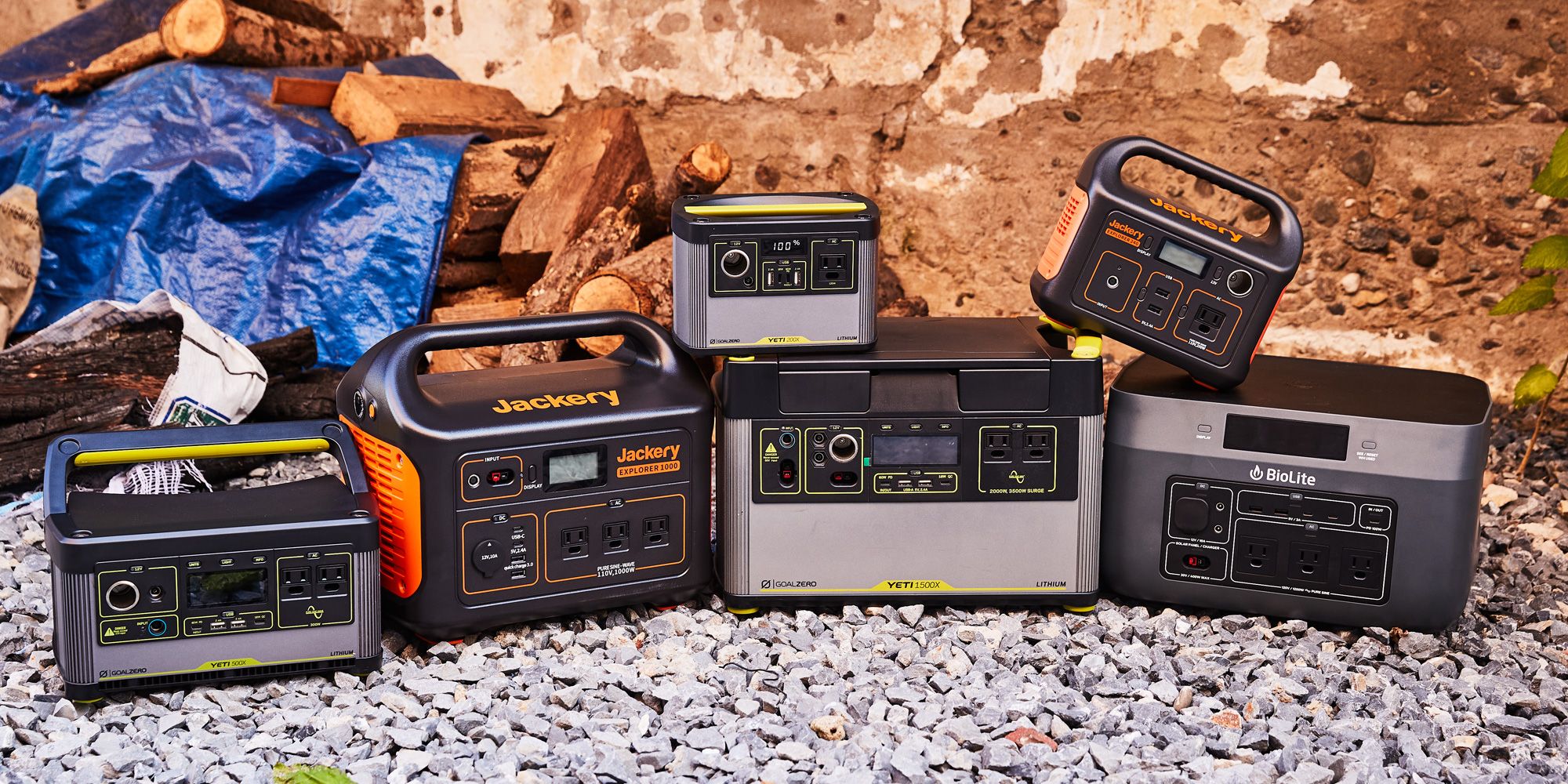
Below are two critical aspects to pay attention to when selecting the right generator for your needs:
Wattage and Fuel Efficiency
- Wattage Output: Determine the power requirements of your detailing equipment and select a generator with sufficient wattage to support them. Consider both the starting (surge) and running wattage of the devices you’ll be using.
- Fuel Efficiency: Look for generators with advanced engine technology and fuel-efficient designs. Opting for a model with automatic idle control can help conserve fuel by adjusting engine speed based on load demand, reducing fuel consumption during lighter loads.
Understanding the power demands of your tools and equipment ensures that you choose a generator capable of providing reliable and consistent power without straining the engine or wasting fuel unnecessarily.
Size and Weight Considerations
- Compact Design: Choose a generator with a compact and space-saving design, allowing for easy storage and transport. Look for features like foldable handles or collapsible frames that make the unit more portable.
- Lightweight Construction: Opt for a lightweight generator that strikes a balance between power and portability. Consider the weight of the generator, especially if you’ll be transporting it frequently or need to lift it into and out of a vehicle.
The size and weight of the generator play a crucial role in its usability and maneuverability, particularly for mobile detailing operations. A compact and lightweight design ensures that the generator is easy to transport and set up at various job sites, enhancing efficiency and convenience for the user.
By prioritizing wattage output, fuel efficiency, size, and weight considerations, you can select a lightweight generator that meets your car detailing business’s power needs while offering practicality and ease of use. These key features ensure that you invest in a generator that enhances productivity and supports your on-the-go operations effectively.
Selecting the Right Lightweight Generator for Your Car Detailing Business
When it comes to choosing a lightweight generator for your car detailing business, several factors should be taken into consideration to ensure you make the right decision.
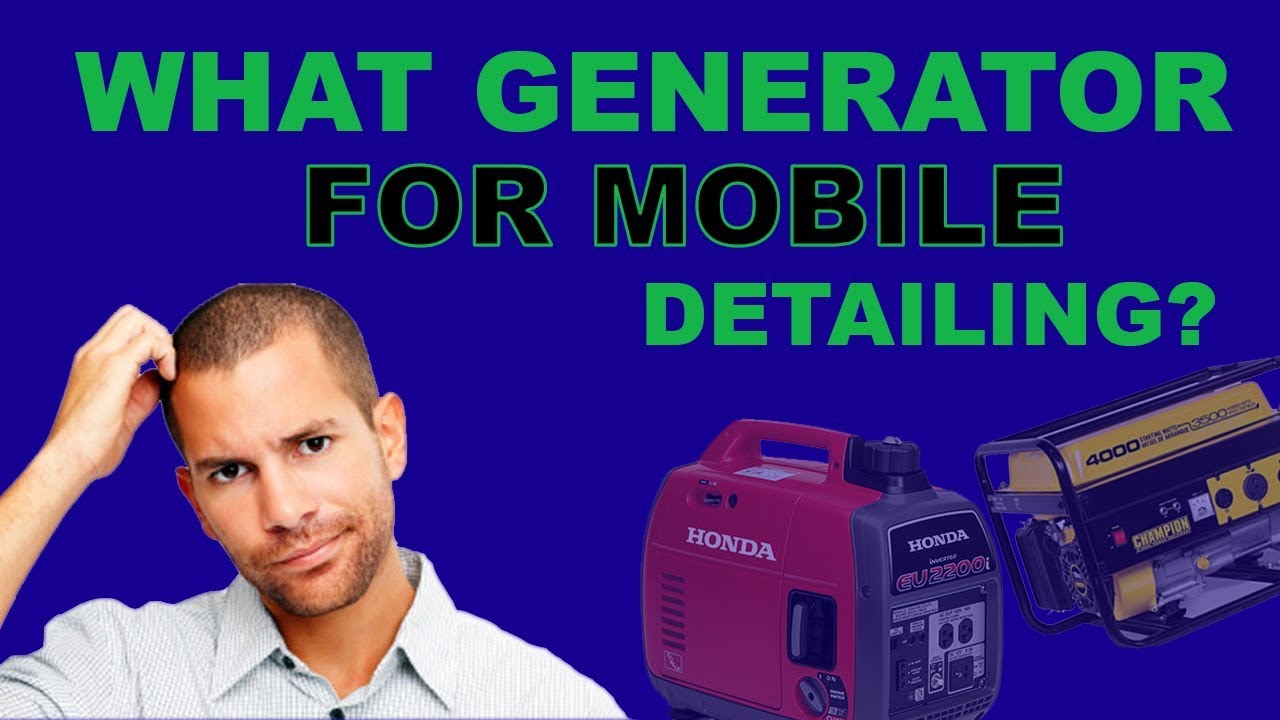
Below are some essential considerations to keep in mind:
Factors to Consider
- Power Requirements: Assess the power needs of your car detailing equipment, including high-pressure washers, polishers, and vacuum cleaners. Determine the total wattage required to run these devices simultaneously or individually to select a generator with adequate power output.
- Portability: Evaluate the portability of the generator, especially if you’ll be moving it frequently between job sites or transporting it in a vehicle. Look for models with compact designs, built-in handles, and lightweight construction for ease of transportation.
- Fuel Type: Decide whether you prefer a generator that runs on gasoline, propane, or diesel fuel. Consider factors such as fuel availability, cost, and environmental impact when selecting the most suitable fuel type for your needs.
- Noise Level: Pay attention to the noise level produced by the generator, particularly if you’ll be working in residential areas or noise-sensitive environments. Choose a model with low decibel ratings or features such as sound-attenuating enclosures for quieter operation.
- Runtime and Fuel Efficiency: Check the generator’s runtime on a single tank of fuel and its fuel efficiency rating. Opt for models with longer runtimes and higher fuel efficiency to minimize downtime and fuel costs during extended detailing sessions.
Matching Generator Capacity with Equipment Needs
- Calculate Total Wattage: Determine the combined wattage requirements of all your detailing equipment to ensure that the generator can handle the load. Consider both the starting (surge) wattage and the continuous (running) wattage of each device.
- Allow for Additional Capacity: Allocate some extra wattage capacity to accommodate future equipment upgrades or additional tools. Choosing a generator with a higher wattage rating than your current needs provides flexibility and prevents overloading the generator.
- Consider Inverter Generators: Inverter generators are ideal for powering sensitive electronic equipment commonly used in car detailing, thanks to their stable power output and clean waveform. Consider investing in an inverter generator for optimal performance and protection of your tools.
By carefully considering these factors and ensuring that the generator’s capacity matches your equipment needs, you can select the right lightweight generator to support your car detailing business effectively. Taking the time to evaluate your requirements and compare different models will help you make an informed decision and invest in a generator that meets your specific needs and preferences.
Maintaining Your Lightweight Generator
Regular maintenance is essential to ensure the optimal performance and longevity of your lightweight generator. By conducting routine checks and following maintenance tips, you can prevent potential issues and prolong the lifespan of your equipment. Additionally, knowing how to troubleshoot common problems will enable you to address issues promptly and minimize downtime.
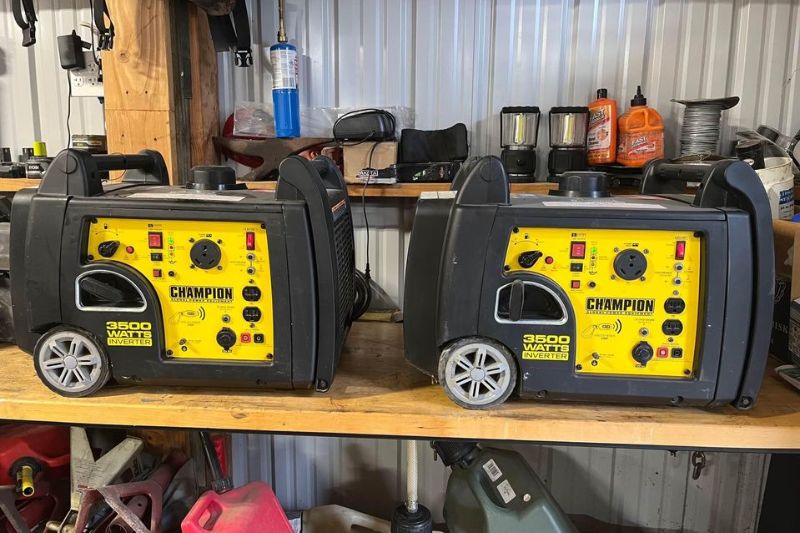
Here’s how you can maintain your lightweight generator effectively:
Routine Checks and Maintenance Tips
- Inspect Fuel System: Regularly check the fuel system for leaks, clogs, or any signs of damage. Ensure that the fuel lines are secure and the fuel tank is clean and free from debris. Replace the fuel filter as needed to maintain fuel quality and engine performance.
- Change Oil and Filter: Follow the manufacturer’s recommendations for oil changes and filter replacements. Regular oil changes help lubricate engine components and remove contaminants, ensuring smooth operation and prolonging the engine’s lifespan.
- Clean Air Filter: Clean or replace the air filter regularly to prevent dust, dirt, and debris from entering the engine. A dirty air filter can restrict airflow, leading to reduced engine performance and fuel efficiency.
- Inspect Spark Plug: Check the spark plug periodically for signs of wear, corrosion, or fouling. Clean or replace the spark plug if necessary to ensure proper ignition and combustion.
- Test Battery: If your generator features an electric start system, test the battery regularly to ensure it holds a charge and operates effectively. Clean the battery terminals and connections to prevent corrosion and ensure reliable starting.
Troubleshooting Common Issues
- Engine Won’t Start: Check the fuel level, spark plug, and battery (if applicable) to identify potential causes. Ensure that the fuel valve is open, the choke is set correctly, and the engine switch is in the “on” position. If the engine still won’t start, consult the owner’s manual for specific troubleshooting steps.
- Low Power Output: If your generator is producing insufficient power, check for overloaded circuits, dirty air filters, or fuel system issues. Ensure that the generator is operating within its rated capacity and that all electrical connections are secure.
- Excessive Noise or Vibration: Inspect the generator for loose or damaged components, such as bolts, nuts, or engine mounts. Tighten any loose fasteners and ensure that the generator is sitting on a stable, level surface to reduce noise and vibration.
By performing routine maintenance checks and promptly addressing any issues that arise, you can keep your lightweight generator in optimal condition and ensure reliable performance for your car detailing business. Regular maintenance not only prevents costly repairs but also maximizes the lifespan of your equipment, allowing you to operate efficiently and effectively on job sites.
Safety Precautions When Using Portable Generators
Ensuring the safe operation of portable generators is paramount to protect both users and equipment. By following proper grounding methods and adhering to safe operation practices, you can minimize the risk of accidents and electrical hazards.
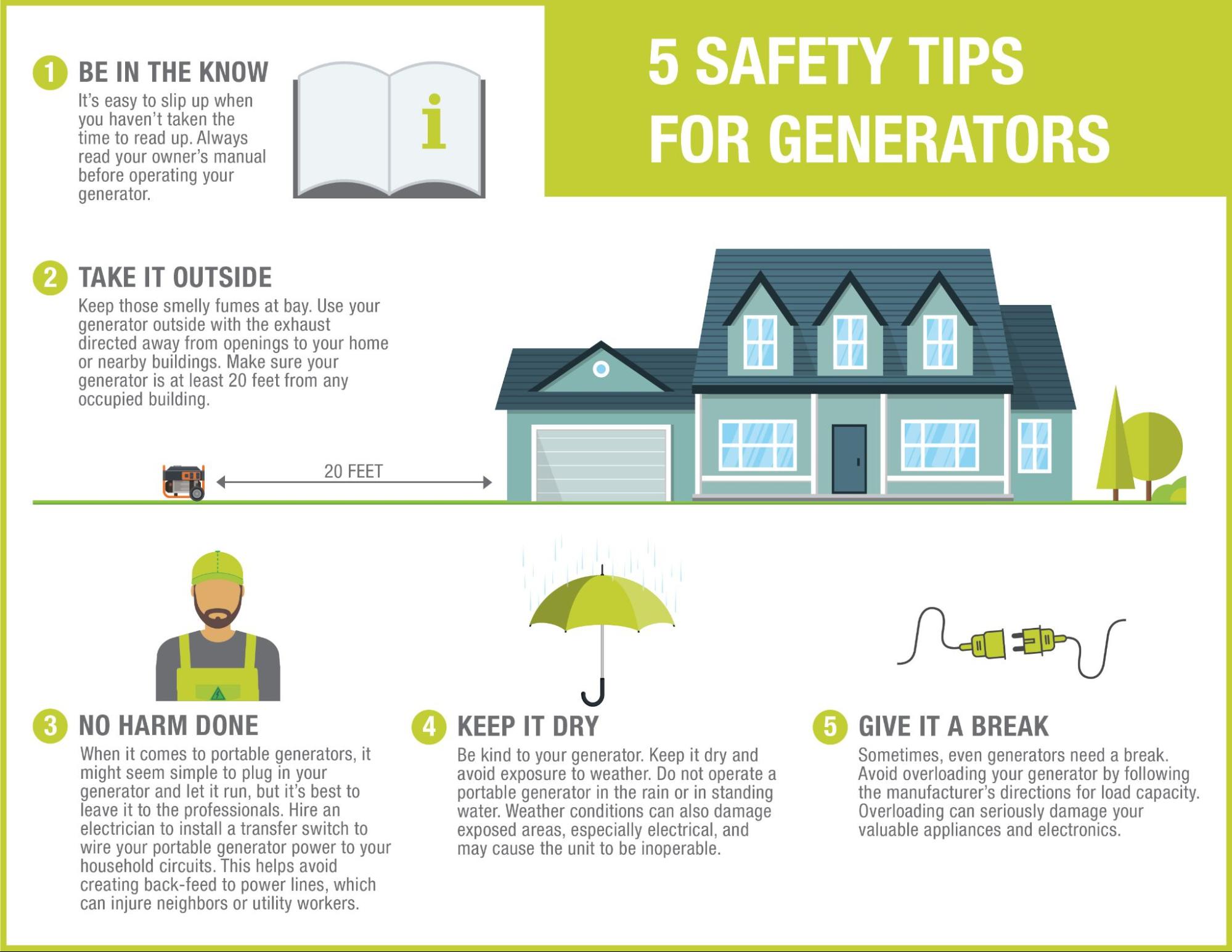
Here are essential safety precautions to consider when using portable generators:
Proper Grounding Methods
- Grounding Rod: Use a grounding rod to establish a reliable electrical ground for the generator. Drive the grounding rod into the earth near the generator and connect it to the generator’s grounding terminal using a grounding wire. Proper grounding helps dissipate excess electrical energy and reduces the risk of electric shock.
- Ground Fault Circuit Interrupter (GFCI): Install a GFCI device on the generator’s electrical outlets to detect ground faults and automatically shut off power to prevent electrical shocks. GFCIs are particularly important when using portable generators in damp or wet conditions, such as outdoor environments.
- Avoid Overloading Circuits: Do not overload generator circuits by connecting too many devices or appliances. Overloading can lead to overheating and electrical fires. Use extension cords of adequate gauge and length to distribute power safely and prevent voltage drops.
Safe Operation Practices
- Outdoor Use Only: Operate portable generators outdoors in well-ventilated areas to prevent the buildup of toxic carbon monoxide gas. Never use generators indoors, including in garages, basements, or enclosed spaces, as this can lead to carbon monoxide poisoning.
- Keep Generator Dry: Protect the generator from moisture and precipitation by placing it on a dry, level surface and covering it with a generator tent or canopy if necessary. Moisture can damage electrical components and increase the risk of electrical hazards.
- Proper Fuel Handling: Use caution when handling and storing fuel for the generator. Store fuel in approved containers away from ignition sources and refuel the generator only when it is cool to prevent fuel spills and fires. Never add fuel while the generator is running.
- Regular Inspections: Perform visual inspections of the generator before each use to check for signs of damage, wear, or leaks. Inspect electrical cords, plugs, and outlets for fraying or damage, and replace any worn components immediately.
- Follow Manufacturer’s Instructions: Read and follow the manufacturer’s instructions and safety guidelines provided in the owner’s manual. Familiarize yourself with the generator’s features, controls, and safety mechanisms to operate it safely and effectively.
By observing proper grounding methods and practicing safe operation procedures, you can minimize the risk of accidents and ensure the safe use of portable generators in various applications, including car detailing. Prioritizing safety not only protects individuals and property but also promotes efficient and trouble-free operation of the generator.
Conclusion: Enhancing Your Car Detailing Business with the Right Generator
In wrapping up, it’s evident that selecting the appropriate lightweight generator can significantly elevate the efficiency and effectiveness of your car detailing business. By prioritizing portability, power output, and safety features, you can ensure smooth operations and a reliable power supply for all your equipment.
Investing in top-quality equipment, like the generators offered by Best Generator For Mobile Detailing, not only boosts productivity but also enhances the safety of your workspace. With their advanced features and robust construction, these generators empower you to tackle car detailing tasks with confidence and precision.
To take your car detailing business to the next level, it’s essential to invest in a generator that aligns with your specific requirements. Don’t compromise on quality when it comes to powering your operations—opt for Best Generator For Mobile Detailing for unparalleled performance and durability.
Marion Woods is an accomplished generator technology expert with over 15 years of experience, currently serving as the Chief Technology Officer at GenTech Power Solutions. She holds a Master’s degree from MIT and specializes in enhancing generator efficiency and integrating renewable energy sources. Marion is a respected author and speaker in the engineering community, dedicated to pioneering sustainable power solutions.
